#but “cop with a yakuza brother” story is just my genre so it makes sense
Text
Will probably be yelling about Giri/Haji in the coming days idk. Just finished the show and it was so good and I'm in shambles that it's just 8 episodes.
#didnt expect the show to be this good tbh#but “cop with a yakuza brother” story is just my genre so it makes sense#also my kubozuka thirst is at its peak im sorry#mystuff#giri/haji
5 notes
·
View notes
Text
The Works of Ridley Scott - My Top Ten
So I decided I’d drop another series of big post lumps of spam on you guys by rocking my favourite directors’ works by rating my personal favourites of each, and I figured what better place to start than my absolute number one, so here we go - these are my very favourite films of my absolute cinematic IDOL, the master of British auteur filmmakers. Enjoy ...
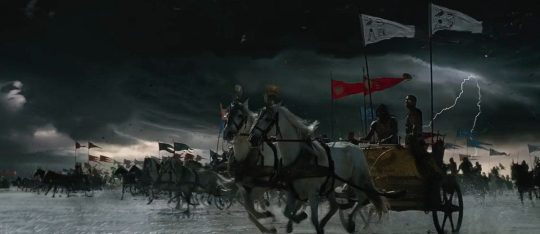
10. EXODUS: GODS & KINGS
It takes a really ballsy filmmaker to try and make a big budget live action Ten Commandments movie after Cecil B. DeMille’s monstrous Technicolour epic, but guts is something Scott’s never been lacking in, and the result is one of his most striking offerings of recent years, a meaty revisionist take on the Book of Exodus that jettisons most of the mysticism to concentrate on the gritty human struggle at its heart. It’s the story of two warring brothers and the lengths each is willing to go to in order to achieve their opposing ends, and while Scott typically delivers BIG TIME on the spectacle and immersive world-building, where he really shines is as an actor’s director, here rightly focusing on the deeply complex relationship between Christian Bale’s Moses and Joel Edgerton’s Pharaoh Ramesses II. The end result is a lesser known but no less worthy swords-and-sandals epic than his signature entry to the genre.
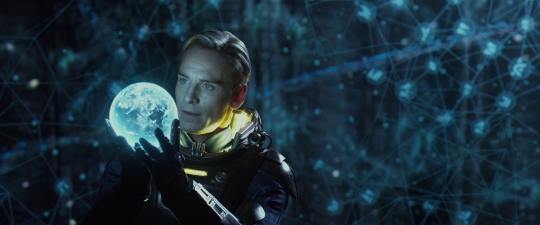
9. PROMETHEUS
Like many fans of the Xenomorph saga he helped create, I was excited but also understandably wary of his return to the franchise with a proposed “prequel”, and to be honest as an Alien movie this actually is a bit of a mess, trying a little too hard to apply that connective tissue and ultimately failing more than it succeeds (indeed, as a franchise entry, direct sequel Alien: Covenant is a far more successful effort). Personally, I’ve always preferred to simply consider it as a film in its own right, and as a standalone sci-fi horror thriller this is a CRACKING film, insidious, atmospheric, moody and magnificent in equal measure, Scott weaving a sense of dangerous mystery and palpable dread throughout that grips from enigmatic start to devastating finish. Noomi Rapace is an excellent Ripley-substitute, but the true breakaway star of the film is Michael Fassbender as twisted android sociopath David, just as chilling as the horrors he unleashes on his unsuspecting crewmates.

8. THELMA & LOUISE
To be brutally honest, Ridley’s output in the 1990s was largely unimpressive (White Squall left me cold, while 1492: Conquest of Paradise was technically brilliant but discouragingly slow and disjointed, and I think we can all agree cinema would be better off if GI Jane had never happened), but at least he got the decade off to a strong start with this beautiful, lyrical, heartfelt and undeniably powerful tale of unerring friendship triumphing against fearful odds. It may have been directed by a man, but it was written by a woman (Callie Khouri, creator of TV’s Nashville, who rightly won a Best Original Screenplay Oscar for her astounding work) and is unapologetically told from a woman’s point of view, which is finally becoming an accepted thing in blockbuster filmmaking, but back then it was still a new concept, and you have to applaud Scott for being one of its pioneers. It may be most well known these days for giving Brad Pitt his big break, but the film’s focus is VERY MUCH on Geena Davis and Susan Sarandon as the titular friends, forced to go on the run after an innocent night out goes horribly wrong. After becoming one of THE hot ticket date movies of the 90s, it’s still fondly remembered for its heartfelt message, gentle humour and powerful climax.

7. BLACK RAIN
Probably the closest Ridley ever came to capturing his brother Tony Scott’s more popcorn-friendly brand of super-slick, glossy blockbuster fare was this Japan-set fish-out-of-water cop flick, but he couldn’t help adding a real weight and substance to the final product, and the result is one of my very favourite thrillers of the 80s. Michael Douglas was riding high after his Academy Award win for Wall Street, but his performance as hot-headed maverick NYPD detective Nick Conklin has always been my personal favourite, and he shares strong chemistry with a young Andy Garcia as his wise-cracking partner Charlie Vincent, but the film’s understated secret weapon is heavyweight Japanese character actor Ken Takakura as Masahiro, the stoic, by-the-book Osaka police inspector they’re forced to team up with in order to capture rogue Yakuza underboss Sato (a deliciously feral turn from the Yūsaku Matsuda in his very last screen role before his death just months after the film’s release) and bust an international counterfeiting ring. This is definitely Scott’s glossiest film, but there’s hidden depth behind the neon-drenched visuals, the expertly staged set-pieces perfectly countered by a robust story, precision-crafted character work and bucket-loads of emotional heft (especially surrounding the film’s high point, one of the most devastating character deaths in cinematic history). It may not be held in the high regard of many of his more “sophisticated” films, but in my opinion it’s just as worthy of recognition, and I’ll defend it to the death.

6. THE MARTIAN
Scott’s last truly GREAT film (to date, anyway) is also one of his most effortlessly likeable, a breathless, breezy and thoroughly FUN adaptation of the bestselling debut novel of space-exploration geek Andy Weir. Matt Damon must have been born to play Mark Watney, an astronaut in the third manned mission to Mars who is accidentally left for dead on the surface when the crew are forced to evacuate by a catastrophic dust storm; alone and with no means of escape, Watney must use all his scientific smarts to survive long enough for NASA’s desperate rescue mission to reach him. He’s a thoroughly endearing everyman hero we can’t help rooting for, self-deprecating and oozing sass all day long, and in his company the film’s two-and-a-half hours simply RACE by, while one of Scott’s strongest ever supporting casts (which includes Jessica Chastain, Chiwetel Ejiofor, Sean Bean and a glorious scene-stealing cameo from Donald Glover) once again proves that he really is one of the very best actor’s directors around. Thoroughly ingenious, visually stunning and frequently laugh-out-loud hilarious, this is definitely Scott’s most endearing film to date, about as perfect a popcorn flick as you’re gonna find outside the MCU …

5. KINGDOM OF HEAVEN (Director’s Cut)
Certainly the most maligned film in his oeuvre, this has perhaps the most troubled production history of ALL his works, famously mauled in post as 20th Century Fox rushed to get the still unfinished feature ready enough for its summer 2005 release, the clunky theatrical cut understandably met with mixed reviews and somewhat underperforming at the box office. Thank the gods, then, for Scott’s unerring perfectionism – he couldn’t rest with that lacklustre legacy, so he knuckled down and produced what is, in my opinion, the very best of all his director’s cuts, reinstating an unprecedented FIFTY MINUTES of missing material which doesn’t just flesh out character arcs but frequently creates an entirely new, far richer and MUCH more rewarding overall narrative, and the final feature was met with thoroughly well-deserved critical acclaim. Not only is this one of my favourite Ridley Scott films, it’s one of my very favourite historical epics PERIOD, a magnificently rich, sprawling saga of blood, sex, honour and courtly intrigue as we follow blacksmith-turned-knight Balian (Orlando Bloom in one of his very best roles) on his quest for redemption in the Holy Land at the height of the Third Crusade. This is still one of the director’s most expensive films, and EVERY PENNY is right there on the screen, each scene designed to perfection and dripping in astounding period detail, while the sweeping cinematography is some of the very best in his entire catalogue, and the battle sequences so expansively vast they even put Gladiator’s opening to shame. So, far from being his greatest folly, this was ultimately one of Scott’s greatest triumphs, and I can’t recommend it enough.

4. BLACK HAWK DOWN
In my opinion, this is the absolute PEAK of Scott’s cinematic achievements to date as an action director – almost two-and-a-half hours of relentless blood, bullets, smoke and terror that’s as exhilarating as it is exhausting, as emotionally uplifting as it is harrowing, quite simply the DEFINITIVE portrayal of the bonds of brotherhood forged by men under fire. The film tells the story of the Battle of Mogadishu in 1993, 24 blood-soaked hours in which US military forces were trapped behind enemy lines and besieged on all sides by hostile Somali forces after a botched raid saw two Black Hawk helicopters shot down, precipitating a snowballing military catastrophe and a bitter fight for survival. Certainly the film takes many liberties with the historical accuracy (then again that’s pretty much Hollywood’s standard approach regarding true story war movies), but there’s no denying it perfectly captures the desperate chaos the soldiers must have faced on the day, throwing the viewer headfirst into a dusty, noisy hell and refusing to let him out again. The action sequences are some of the finest I have EVER seen committed to film, but the film has just as much heart as guts, tugging our heartstrings and jerking plenty of tears because we really come to care about these boys and what happens to them. Intense, rousing, explosive, provocative – definitely the action highlight of Scott’s oeuvre.
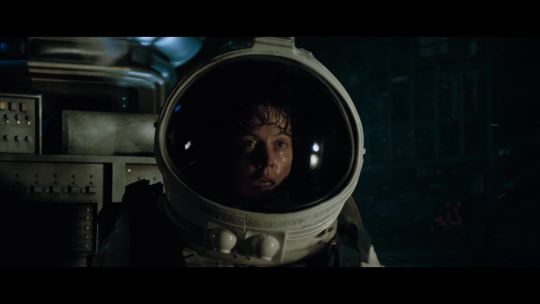
3. ALIEN
It may have some decidedly humble beginnings, but the opening chapter in the other jewel in 20th Century Fox’s sci-fi franchise crown is now considered to be THE greatest science fiction horror film of all time, and rightly so – it’s a textbook example of a flawlessly-executed high-concept “haunted house in space” flick, a master-class in slow-building atmospherics, sustained tension and some truly hair-raising shocks that are as fresh and effective today as they were back in 1979. Not bad for something that started out as a pulpy B-picture script from Dan O’Bannon (co-writer and star of John Carpenter’s cult feature debut and one-time student film Dark Star). The cast is stellar (ahem), dominated OF COURSE by then pretty much unknown young upstart Sigourney Weaver in what REMAINS the greatest role of her decidedly impressive career, but the true star of the film is the creature itself, the late H.R. Giger’s twisted, primal design teased with consummate skill to maximise the stealthy effectiveness of what has become the definitive extraterrestrial nightmare fuel of sci-fi cinema. Ultimately I’m more of an Aliens fan myself, but I don’t deny that this is a MASTERPIECE of the genre, and I f£$%ing LOVE IT.
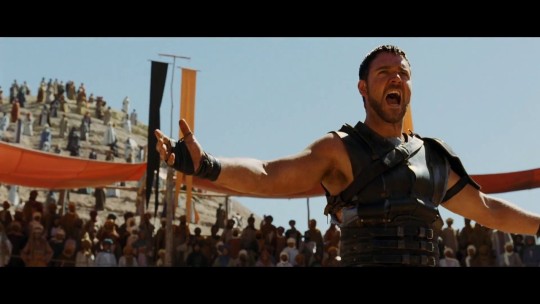
2. GLADIATOR
It may have been usurped by Kingdom of Heaven as Scott’s most ambitious film, but his first dabble in swords-and-sandals cinema remains the best of his historical epics, and at the time proved to be a MASSIVE shot in the arm for what had long become a flagging, largely forgotten genre, spawning a veritable LEGION of bandwagon-jumping followers. Needless to say, NOBODY does this better than Scott, who brought the opulent excess of ancient Rome and its vast empire to vivid life in all its bloodthirsty, duplicitous detail, from the back-stabbing intrigues of the Senate to the life-and-death drama of the Coliseum. The script is rich and heady stuff (penned as it is by former playwright John Logan), exquisitely performed by a premium-cut cast (particularly impressive was the late Oliver Reed in his very last screen role) and bolstered by some of the most impressive battle scenes ever committed to film, but the true driving force of the film is the ferocious antagonism between the hero and villain, Russell Crowe and Joaquin Phoenix both making the transition from rising-stars to genuine A-listers with major box office clout thanks to their truly electrifying performances. After his relative creative slump in the 90s, Scott’s first offering of the new Millennium proved the start of a major renaissance in his work, and thankfully it’s shown no sign of flagging since …
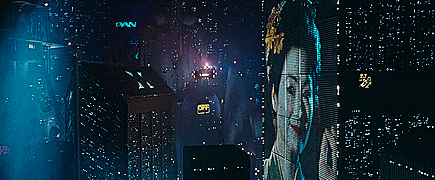
1. BLADE RUNNER
Not only is this my favourite film by my favourite director, but also what, if I was REALLY PRESSED, I would have to call my very favourite movie EVER. I’m gonna be waxing most lyrical about this in great detail when I drop my big-screen sci-fi Top Ten on here, so I don’t want to talk about it TOO MUCH here … suffice to say this has been a dominant fixture in my favourites since my early adolescence, when I first stumbled across it on TV one Saturday night, and even though it was the theatrical cut with its clunky voice-over and that ridiculous tacked-on happy ending, I was instantly captured by its searing visionary brilliance and dark, brutally nihilistic power, so when Scott finally released his first Director’s Cut I was already DEEPLY in love with this film. Sure, being a Star Wars fan, Harrison Ford will ALWAYS be Han Solo for me (along with Indiana Jones, of course), but my personal favourite role of his career is Rick Deckard, the sleazy, downtrodden and world-weary android-hunting gumshoe stumbling through his most deadly case in the mean streets of rain-lashed cyberpunk megalopolis Los Angeles circa 2019, while Rutger Hauer effortlessly steals the film as his mercurial nemesis, live-fast-die-young Nexus 6 Roy Batty. This is still THE MOST BEAUTIFUL FILM I HAVE EVER SEEN, the visual effects work still standing up perfectly today, the exquisite design work and peerless atmospheric cinematography rightly going on to inform and influence an entire genre of science-fiction both on the big screen and off, and I cannot recommend it enough to anyone who hasn’t already seen it. Deliciously dark, fiendishly intelligent and heart-rending in its stubborn refusal to deliver easy answers or present us with a cathartic HAPPY ending (no matter what the theatrical cut might want you to think), this really is as good as cinema gets.
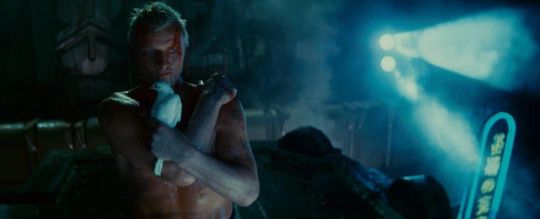
There you have it, my top movies from the man I personally consider to be the greatest filmmaker around tody, and here’s hoping we’re gonna see a lot more from him yet ... Sir Ridley Scott, knight of the f£$%ing realm ...
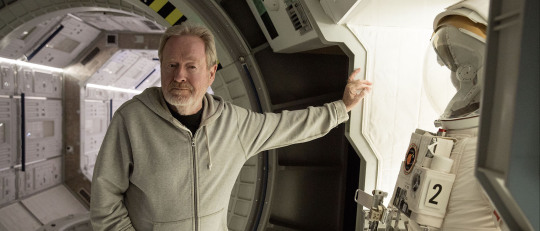
#Ridley Scott#sir ridley scott#exodus gods & kings#prometheus#thelma & louise#black rain#the martian#kingdom of heaven#kingdom of heaven director's cut#black hawk down#Alien#gladiator#Blade Runner#greatest director of all time
15 notes
·
View notes
Text
Title Yakuza Kiwami Developer Sega Publisher Sega Release Date August 29, 2017 Genre Action-adventure Platform PS4 Age Rating Mature Official Website
With the success of Ryu ga Gotoku 0: Chikai no Basho, or simply Yakuza 0 in the West, Sega went further in celebrating the 10th anniversary for the series by re-releasing Ryu ga Gotoku or Yakuza as almost like an expansion. This time, not as an HD Remaster like the one released prior on the PS3, but a full blown remake with the same engine used for Ryu ga Gotoku Ishin and Yakuza 0. Bringing forth improved visuals texture and character models, frame rate, combat, and new added content which includes expanding portions of the story like the transformation of Kiryu’s sworn brother Nishiki from an ally into an antagonist. Since the HD Remaster never made it to Western shores and given how dated the first game can feel, it made perfect sense with 0 being a prequel and a new good starting point for those who wanted to dive into the franchise without dusting off their PS2s. With how well Yakuza 0 fared, how does the remake of such a classic stand up with these benefit of these new mechanics and added content?
Yakuza Kiwami begins 7 years after the events of Yakuza 0, with Kiryu now considered a rising star at this point who continued serving under the Dojima family banner. After doing the usual rounds of collecting debt money, Kiryu meets up with his old friends Nishiki and Yumi at Reina’s bar in celebration for his new future prospects. As the day goes by, Kiryu goes to visit the head of the Kazama family and his foster father, Shintaro Kazama, to catch up. Before they can go into details, Kiryu gets a call that Dojima kidnapped Yumi in his usual drunken haze and Nishiki was going after him. Knowing things would get bad, Kiryu rushes to Dojima’s office only to arrive too late with the sight of Dojima lying dead from Nishiki shooting him in self-defense. Knowing what fate his friend would face as a consequence of murdering one’s family head, Kiryu decides to take the fall and goes to jail in his place. Ten years pass and things have only gotten worse for the Tojo clan as the clan’s fortune has been stolen and the Third Chairman of the clan, Sera, turns up dead the day after it was discovered. If that was not enough, during the 10 years Kiryu found out that Yumi disappeared without a trace. After being released, Kazuma heads back to Kamurocho to help his foster father and locate his childhood friend and old flame Yumi, as well as protect a little girl named Haruka who shares a strange connection to Yumi.
For its time, the game’s plot was riveting and had just enough twists and turns to keep me interested with a well-rounded cast from all walks of life. Some of the twists haven’t aged that well, but some have been given a much-needed update to make them a little more believable. At the end of every chapter now, we get a glimpse of how Nishiki went from being a lowly officer to eventually becoming a villain. While I wished we had more to go on like his sister, I’m glad we got something as the original game presented us with friends with a long history but that was something we never got to experience until Yakuza 0. Even Yumi got some love with an entirely new section in the first chapter dealing with her birthday and Kiryu going out of the way to get a ring for her. It feels like padding but it was funny and emotional enough that I felt it was worth putting in. On the other hand, the additions to what they did for Majima I personally believe were not only unnecessary and hurt the narrative a bit but felt unwarranted. I won’t dwell on it, but they introduced a new game mechanic called the “Majima Everywhere” system that rears its head in the game’s plot. It is what it is, fan service and nothing but. It’s good to flesh out the beginning of the game with how he wants to test Kiryu’s convictions, but was it really necessary for him to get severely injured not once but twice just so you can justify his presence for this game mechanic, only for him to be taken out of commission just before the last story boss fight, when in the first game his early injury did just that? It’s superfluous and beyond stupid. Is it nice that they answered why Majima was obsessed with fighting Kiryu, something that the original game and the prequel Yakuza 0 skimmed over. Hell, not even the sequel Yakuza 2 ever explained it. But is it a good idea to shove this character in my face far more often even when it’s not necessary when it could have instead used that time for other characters? No.
When it comes to the Yakuza games, it’s the standard drill, a beat ’em up action game where you run around doing side stories with many random encounters to beat random punks to level your character with many little excursion possibilities sprinkled throughout the city in the form of mini-games, all the while continuing the plot at your own leisure. Speaking of mini-games, there are plenty though not too many new additions except the return of Pocket Racer with a few familiar faces now all grown up and the rock paper scissor style Cat Fights now with more depth and less frustration in the form of an arcade game called Mesu King; all the women now dressed up as insects and its pretty enjoyable and hilarious with all of its quirks. As for the meat of the game, the game is essentially Yakuza 1 with 0‘s skin, in both the game’s engine and combat system. Kiryu’s three styles from Yakuza 0 are back with of course the Dragon of Dojima style being available from the get go but with a unique twist. Since the bubble era is over, the game returns back to the old style of leveling mirroring the original game. You obtain experience through random fights, eating and finishing sub stories, with 78 in all, under 3 categories with the sphere grid system from Ishin and Yakuza 0 returning for Kiryu’s returning three styles. The aforementioned unique twist comes in the form the previously mentioned Majima Everywhere system, which is more negative than positive and holds the game back.
The fourth sphere grid doesn’t use any experience and instead, each orb has criteria to fulfill which unlocks the abilities for the fourth style, the Dragon of Dojima. When Kiryu left prison after 10 years, he has lost all of his abilities, which include his trademark style, so instead of just continuing on as normal at the beginning of chapter 2 like the original game, you instead bump into Majima who starts a fight and beats Kiryu easily. Not being happy with how weak Kiryu has become he offers to follow Kiryu around and pick a fight by any means. Hence the name “Majima Everywhere” he will literally be everywhere, in a trunk of a car, under a giant traffic cone, he will sneak behind you from an alley way, dress up as a cop to stop and frisk you etc. That’s not all, he will even go as far as to challenge you in several of the game’s minigames, like Pocket Racing, bowling, darts, you name it. I will admit, it at times was entertaining seeing Majma going out of his way to dress up even as a Hostess and the game just goes with it and you play the mini game like normal, dropping some references here and there from the multiple games and the ranking specific events were hilarious. However, to go up said ranks to unlock more abilities you need to fight him a lot and I mean a lot, specifically to obtain all the abilities from Majima’s side, with a few obtained from Komaki’s training, meaning you will have to fight Majima a whopping 50 times. That includes the fights in the story as well and others that are by pure accident as he will continue to hound you on the streets at any and all times. It’s repetitive, at times frustrating as his health grows exponentially and if he so sneaks up on you in his frequent hot spots, you must fight. So I hope you are willing to lay the smack down for another 5 to 10 minutes every time or just load up a save.
More Kiwami on Page 2 ->
Making a great remake isn’t easy, as this game proves that even with good intentions, sometimes added content can be detrimental and hurt the overall product, especially ones that are so tied to the game mechanics and in this rare case as well as the story. Majima Everywhere is when fan service goes too far and becomes more fan disservice — I honestly don’t want to fight Majima for a long time and I don’t expect seeing myself replaying this version of the first game all that often because of this. The first game is dated, yes there is no denying it, but what I loved about it and subsequent releases after was how well they were paced. I can play the story and do most of the sub stories with a mixture of random encounters and my Kiryu will get maxed stats and all abilities outside of training. While this thankfully applies to the other styles, the same can not be said of the style that Kiryu used for the entirety of the original game and subsequent later installments. It’s just not enjoyable having to grind boss battles and fight a character who gradually obtains more and more health bars thus making the grind even more painful unlike the side quests in Yakuza 0 which felt more natural and flowed better. Yes the developer’s are unapologetic and know they have a smaller budget to work with and reuse assets including the game’s engine and fans realize it and accept the games for what they are, as do I. This terrible decision though was self inflicted — they chose to put something this dull into the equation in the name of fan service and it boggles my mind. Another thing I noticed was the bosses now having been overhauled and now with entirely new move sets, which makes sense, but the problem is that they’re all mostly recycled from other bosses in the franchise. This isn’t entirely new, one instance of this was the moves and animations of one of the Yakuza 5 bosses Okita and reusing the majority of them again for Majima’s Dancer style; but that was it, a few instances, not an entire line up. It just screams laziness rather than being their usual efficient selves as a development team.
When Ryu ga Gotoku Kenzan hit the scene, they added to the series a kind of boss exclusive QTE heat moves and Yakuza 3 followed up with “Feel the Heat” for boss context sensitive heat moves which were somewhat similar. I bring this up because now after so long they come back to an idea similar to those for this title with “Climax Heat” and it came with questionable results. There is nothing more frustrating or just plain annoying than seeing a boss regenerate health. Well in Kiwami each boss, ranging from mid-bosses to simply a strong opponent, has a chance to do just that, multiple times even. Usually, after taking down a health bar down or two from them, they will activate a color coded aura where they will begin to regenerate. To stop this you either use a weapon heat move or a Style Heat Move that corresponds with the color. The problem? Even on Normal the health regeneration can be very quick with them gaining almost an entire health bar back as you switch styles. If you don’t have enough Heat you’re pretty much going to have to either consume an item you carry on yourself that boosts your heat bar or pummel the enemy to gain enough heat, just to possibly get enough damage in so they didn’t regenerate too much health that you just scraped off. Sometimes the prompt just refused to show up and I had to position myself differently to activate it but that allowed them to gain even more health back. It’s a beyond god awful gimmick and it makes Hard difficulty and above unbearable at times.
When the game was released in Japan I heard complaints that the game suffered at times from frame rate dips, and while the game does stutter at times when exploring Kamurocho with a bit of screen tearing, the combat is silky smooth 60 fps with them implementing its updates upon its western release and I’m very thankful. When it came to cutscenes I noticed some updates not just for some new lines to fit the narrative, but even it even updated some of the voice acting which is nice; though the cutscenes themselves are a different story. Being faithful is one thing, but barely updating them shows a lack of effort, and it felt awkward as they just updated the textures and lip-syncing for the old cutscenes but the new ones have far better animation and pacing to them. When it comes to the music, the Ryu ga Gotoku franchise as a whole always delivered and went hand and hand with its gameplay to such a degree that it was ingrained into it and I cannot say the same for these remixes which I honestly felt either were too overproduced or in some fashion butchered them. The long time composer of the series, Hidenori Shoji was tasked in blending multiple musical genres with a modern feel for the game’s 2005 city setting. Doing so masterfully with mixing, hip hop, RNB, rap, rock, heavy metal and jazz to morph into some of the most contemporary and toe tapping music an action beat ’em up could ever have asked for and still feel like a video game soundtrack at its finest. The remix tracks replace real instruments what sounds like for synchronizers and dub step bulldozing what made the tracks not only fitting tone wise but thematically to the scenarios. It’s not all bad, some tracks like the remix for Unrest is fine and the remix for id was serviceable albeit being a departure, but the remixes for say the Funk Goes On and Intelligence For Violence are just terrible. On a side note, not surprising anyone, the licensed tracks are sadly gone, which include the main theme of the game Receive You which was done not in-house but collaborated with an actual famed band in Japan so it didn’t make the cut which I feel was a blow to the game, as it fit Kiryu and served as in introduction to the game perfectly.
Yakuza (2005)
Yakuza Kiwami (2017)
My complaints boil down to poorly thought out new gimmicks and the lack of effort; it’s apparent that this was a quick cash grab, not of the soulless corporate type but of what their general focus was on creative wise. Their development apparatus was clearly being more fully committed to Ryu ga Gotoku 6, or Yakuza 6, and its new engine then it was on for this remake. It’s not a terrible remake, no, but a disappointing one. Doesn’t help matters when one of the series usual strengths, its soundtrack, drops the ball and only makes the above issues I had just seem worse. New fans will likely be satisfied with the low price of $29.99, with this being their first experience of the first game that was chronologically released. As an old fan that played the original, I felt it accommodated me enough but wasn’t as satisfying as it could have been and needed more time to either fix the rough edges, add a bit more content or at least more effort to where the game needed. For the 60 hours I played, I got around 90% of the completion list done and still need to replay it on the hardest setting, so you are getting your bang for your buck. I can only hope that the recently announced remake for Yakuza 2, Ryu ga Gotoku Kiwami 2, will fare better as I hold the second entry in high esteem and near and dear to my heart.
[easyreview cat1title=”Overall” cat1detail=”” cat1rating=”3.5″]
Review Copy Provided by Publisher
REVIEW: Yakuza Kiwami Title Yakuza Kiwami
0 notes